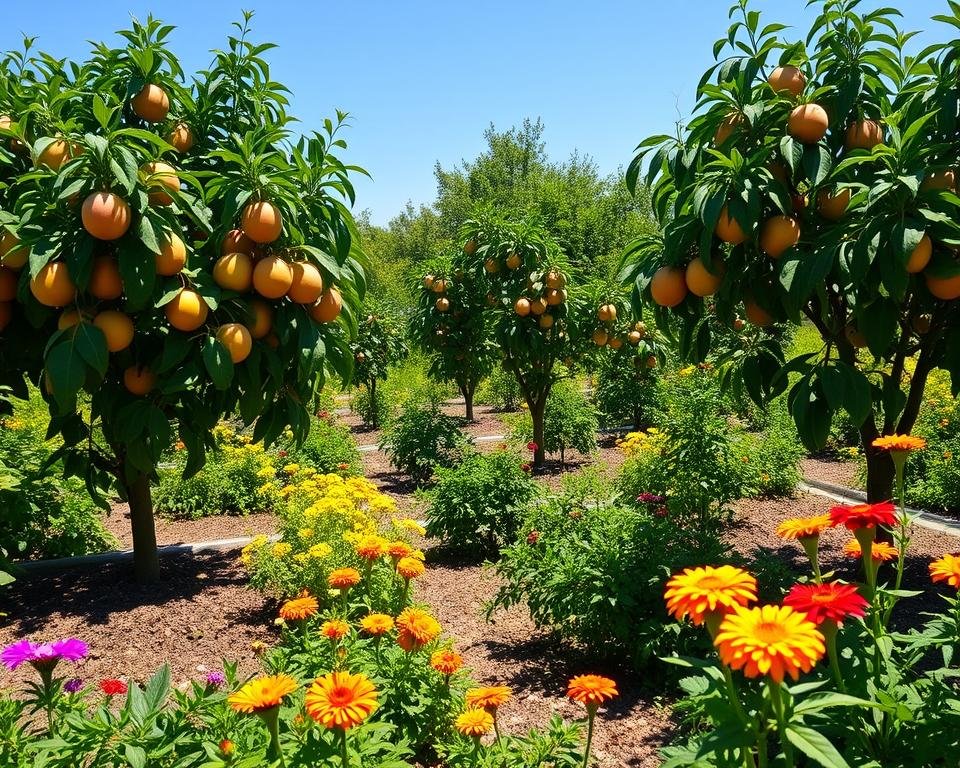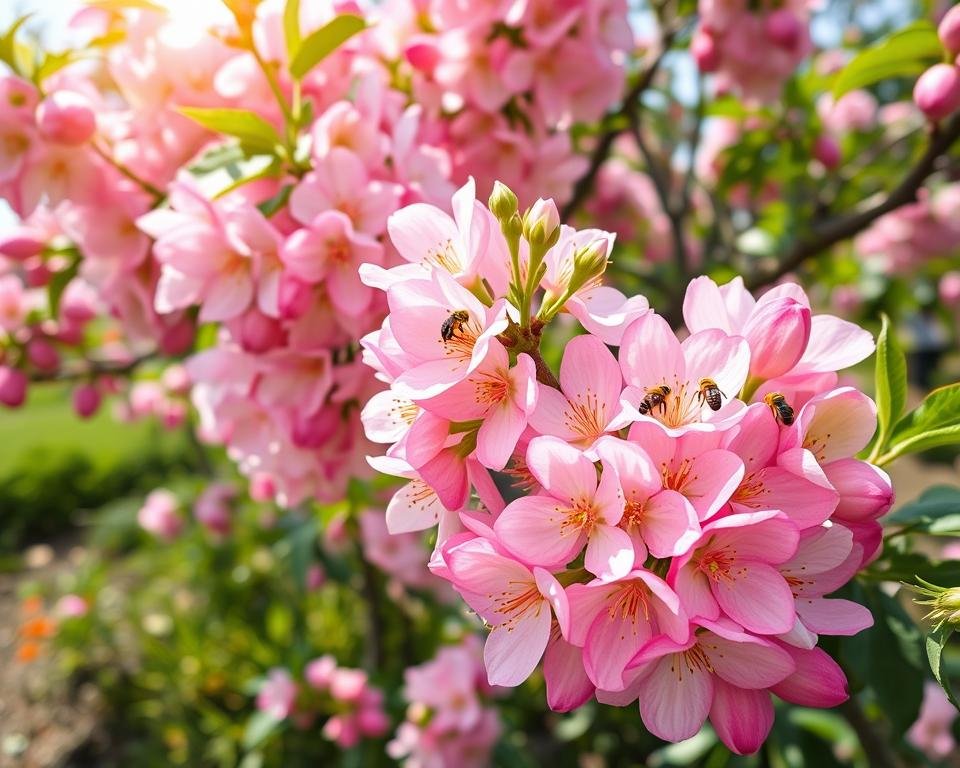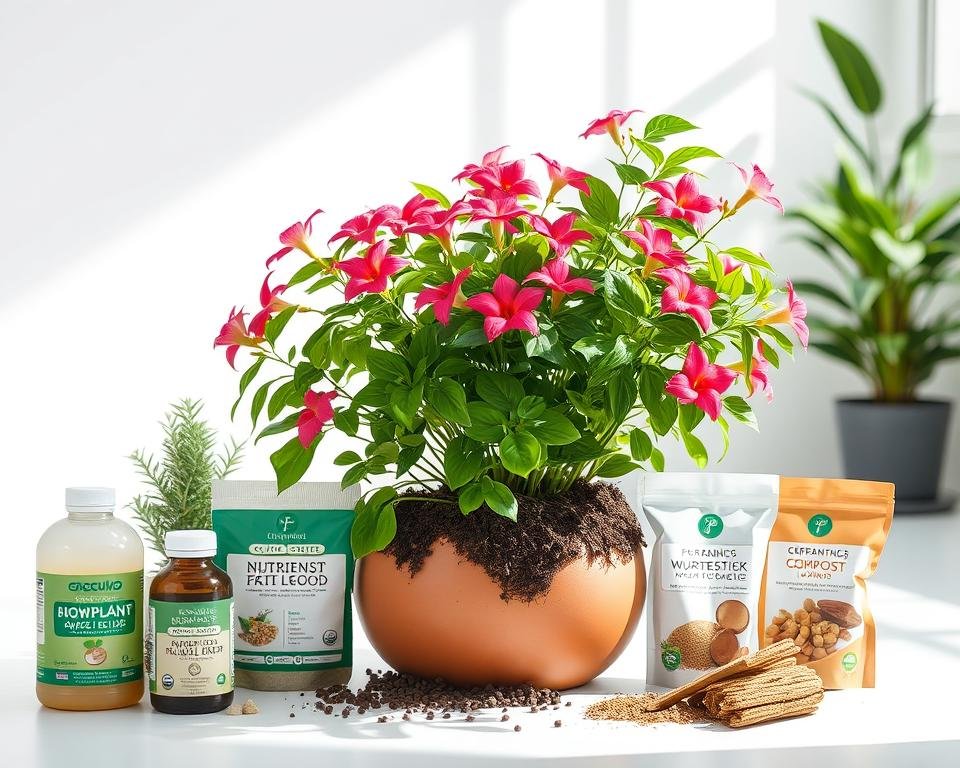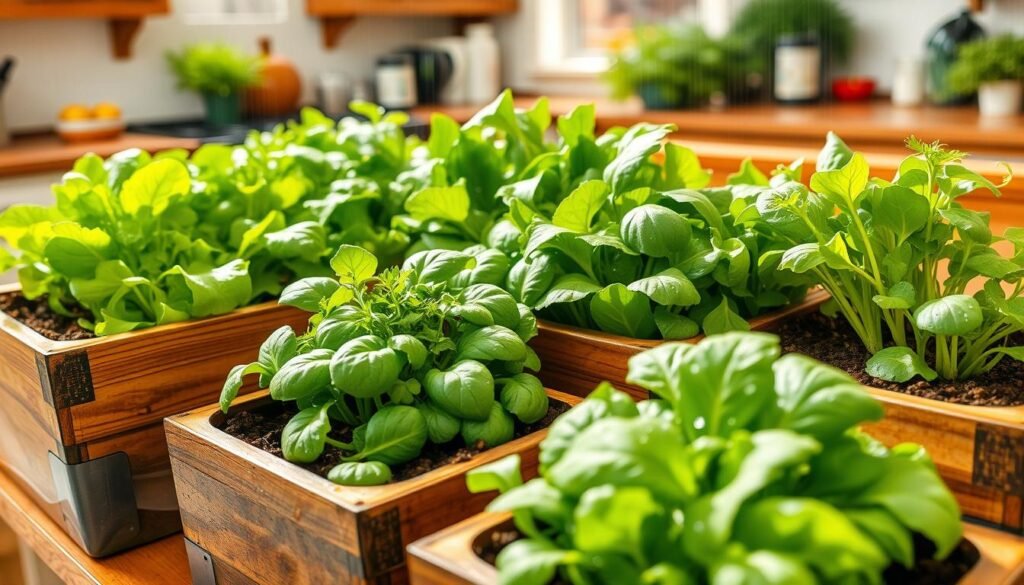Yearning for a lush, fruitful garden but limited by space? Fear not, urban dwellers and small-space enthusiasts. The world of compact and dwarf fruit trees offers a wealth of possibilities. Discover the secrets to cultivating a bountiful harvest, even in the most compact of settings.
This comprehensive guide will unveil the perfect fruit trees for your small garden or urban oasis. It will also provide essential care and maintenance tips. Ensure a thriving, productive orchard, no matter the size of your green space. We’ll cover container gardening, espalier techniques, strategic pruning, and pest management. Transform your little patch of earth into a veritable fruit haven.
Ready to uncover the hidden potential of your small garden and savor the sweet rewards of homegrown fruit? Let’s dive in and explore the world of fruit trees tailor-made for compact living.
A guide to selecting and maintaining fruit trees that are ideal for smaller spac
Even with limited outdoor space, homeowners can still enjoy fresh fruit from their gardens. The key is to choose compact and dwarf fruit tree varieties. These trees are bred for urban and small-scale gardens. They produce the same delicious fruits as larger trees but take up less space.
Compact and Dwarf Fruit Tree Varieties
Dwarf fruit trees usually grow to 8-10 feet tall. Compact varieties can reach 12-15 feet. Popular choices for small gardens include:
- Apple trees, such as ‘Gala’ and ‘Red Delicious’ dwarfs
- Pear trees, like the ‘Seckel’ and ‘Moonglow’ compact cultivars
- Cherry trees, including ‘North Star’ and ‘Stella’ dwarf varieties
- Peach and nectarine trees, such as ‘Garden Gold’ and ‘Nectar Babe’ compact selections
Urban Gardening Solutions
These smaller fruit trees are perfect for urban and small-space gardening. They can grow in containers, raised beds, or even on walls. With proper pruning and training, they can fit into even the smallest outdoor areas. This brings the orchard’s delicious fruits right to your doorstep.
Why Choose Fruit Trees for Small Gardens?
Adding fruit trees to your small garden brings many benefits. Enjoying fresh produce from your own garden and the beauty they add are just the start. These plants also purify the air and offer shade, perfect for the modern gardener.
One key advantage is the chance to harvest your own fruit. Compact or dwarf varieties can grow well in small spaces. This allows you to enjoy the fruits of your labor, providing fresh, nutritious food and a deeper connection to your meals.
Fruit trees also enhance your garden’s look. Their blossoms, leaves, and fruit create a stunning display. This is especially valuable in cities, where green spaces are rare.
Moreover, fruit trees improve air quality by removing carbon dioxide and releasing oxygen. They also provide shade, making your outdoor area more inviting and comfortable.
In summary, fruit trees offer many benefits for small gardens. They provide fresh produce, enhance your garden’s beauty, and contribute to a healthier environment. These plants can turn your urban space into a lush, fruitful oasis.

Container Gardening for Fruit Trees
If you’re limited by outdoor space, don’t let it stop you from growing your own fruit. Compact and dwarf fruit tree varieties are ideal for container gardening. These trees can flourish in pots, adding a touch of orchard charm to any space, whether it’s a small patio, balcony, or urban garden.
Choosing the Right Containers
The size of the pot is critical for container gardening with fruit trees. Opt for a container that’s at least 18 inches deep and 24 inches wide. This ensures the tree’s root system has enough room to grow. Terracotta, ceramic, or wooden planters are good choices because they promote drainage and air circulation.
Soil Requirements
Getting the soil right is essential for your container-grown fruit trees. Use a high-quality potting mix that drains well and is rich in nutrients. Steer clear of regular garden soil, as it can compact in containers. Adding compost or slow-release fertilizer to the potting mix will provide the necessary nutrients for your trees to thrive.
| Container Size | Recommended Soil Volume |
|---|---|
| 18-inch pot | 10-15 gallons |
| 24-inch pot | 15-20 gallons |
| 30-inch pot | 20-25 gallons |
By selecting the right containers and soil, you can grow a variety of fruit trees, like dwarf apples, pears, or citrus, in your small garden. With proper care, you can enjoy a rich harvest from your own backyard oasis.

Espalier Techniques for Small Spaces
For gardeners with limited space, espalier techniques can revolutionize growing fruit trees. This method involves pruning and training trees to grow flat, maximizing space while creating a stunning display. It’s ideal for those with small outdoor areas.
Training branches to grow along a trellis or wire system allows for a space-efficient fruit tree. This method is perfect for urban gardeners and small-scale homesteaders. It ensures a bountiful harvest even in tight spaces.
Mastering Espalier Techniques
Creating an espalier fruit tree requires patience and precision. Here are essential steps to follow:
- Select a dwarf or semi-dwarf fruit tree variety that is well-suited for espalier training.
- Install a sturdy trellis or wire system to guide the tree’s growth.
- Prune and train the branches to grow horizontally along the support system.
- Regularly prune and maintain the tree to keep it in its desired two-dimensional form.
With the right techniques and care, even the smallest outdoor space can become a fruit-growing oasis. Espalier methods make it possible.

Space-Saving Fruit Tree Training
There are other pruning and training techniques for growing fruit trees in compact spaces. Methods like cordon, fan, and step-over training keep trees small and tidy. They still produce a delicious harvest.
Choosing dwarf or semi-dwarf cultivars is key, regardless of the training method. With creativity and horticultural knowledge, you can enjoy fresh fruit in even the most limited areas.
Pruning Methods for Compact Growth
Keeping your fruit trees compact is key to maximizing their yield in a small garden. The right pruning techniques are vital for controlling their growth and shape. This ensures they flourish and give a rich harvest, even in tight spaces. Let’s delve into the top pruning methods for maintaining your fruit trees’ compact and healthy state.
Central leader pruning is a primary technique for compact fruit trees. It involves trimming the main stem, the central leader, to promote lateral branch growth. This approach fosters a bushy, compact tree structure ideal for small gardens.
Espalier pruning is another effective method. It trains the tree to grow flat against a trellis or wire system. This method not only controls the tree’s size but also optimizes space, making it perfect for urban and small-space gardeners.
- Regular summer pruning to remove water sprouts and suckers, which can lead to unwanted growth
- Thinning out the interior of the tree to improve air circulation and light penetration
- Judicious winter pruning to maintain the desired shape and size of the tree
By honing these pruning techniques for compact fruit trees, you can keep your trees at the right size and shape. This ensures a productive and visually appealing small-space orchard.

Pest Management Strategies
Keeping your fruit trees healthy in a small garden is a delicate task. We will discuss effective, eco-friendly pest management strategies. These methods will help you control common pests like aphids, mites, and diseases. This way, your fruit trees can flourish without harsh chemicals.
Organic Pest Control
Organic pest control is essential for protecting your fruit trees in small gardens. These methods are not only good for the environment but also safe for your family and pets. Here are some proven organic solutions:
- Encourage beneficial insects: Attract natural predators like ladybugs, lacewings, and parasitic wasps to your garden. These insects prey on common pests, helping to maintain a balanced ecosystem.
- Use organic sprays: Apply neem oil, insecticidal soap, or horticultural oils to target specific pest infestations. These natural solutions disrupt the life cycle of harmful insects without harming your fruit trees.
- Employ physical barriers: Install row covers or mesh netting to prevent pests from accessing your fruit trees in the first place. This can be an effective way to protect your plants from flying insects.
- Maintain healthy soil: Ensure your fruit trees have the nutrients they need to thrive. Healthy, nutrient-rich soil can help your trees resist pest and disease issues.
By using these organic pest control strategies, you can manage pests effectively. This protects your fruit trees in small gardens while preserving the ecosystem’s balance.

Pollination Strategies for Fruitful Harvests
Proper pollination is key for a fruitful harvest, especially in small gardens. Knowing the pollination needs of your fruit trees and using effective strategies can boost your chances of a successful crop.
Choosing the right fruit tree varieties is crucial. Self-pollinating trees, such as many apple and pear cultivars, can produce fruit without another tree nearby. Cross-pollinating varieties, however, need a compatible pollinator tree to ensure successful pollination and fruit set.
Attracting pollinators like bees, butterflies, and hummingbirds is also vital. Plant a variety of nectar-rich flowers and herbs around your trees to attract them. Consider installing bee houses or hummingbird feeders to encourage these pollinators to visit your garden.
By understanding your fruit trees’ pollination needs and using strategic techniques, you can achieve a bountiful harvest in small gardens. Remember, a bit of planning and attention to pollination can greatly enhance ensuring fruit production in small gardens and maximize your small-space fruit tree pollination efforts.

Conclusion
Incorporating fruit trees into your small garden or urban space can be incredibly rewarding. By choosing compact and dwarf varieties, using container gardening, and mastering espalier, you can enjoy fresh, homegrown produce. This is possible even in the most limited growing areas.
Key takeaways for growing fruit trees in small spaces include focusing on space-saving solutions. It’s also crucial to maintain meticulous care and pruning. Additionally, employing strategic pollination strategies is essential. With these approaches, you can turn your small space into a fruitful oasis.
Whether you’re an experienced gardener or a novice, this guide provides the necessary knowledge. It will help you cultivate your own mini-orchard. Enjoy watching your fruit trees flourish. Soon, you’ll be able to pick the ripe fruit directly from the branch. The taste of homegrown fruit is unmatched.
FAQ
What are the best compact and dwarf fruit tree varieties for small gardens?
For small gardens, focus on compact and dwarf fruit trees. They won’t take over your space. Consider dwarf apple trees like ‘Anna’ or ‘Gala’, and compact pear trees like ‘Harrow Delight’. Miniature citrus trees, such as ‘Calamansi’ or ‘Variegated Calamansi’, are also great options.
How can I grow fruit trees in containers for my small garden or patio?
Compact and dwarf fruit trees do well in containers. They’re ideal for small patios, balconies, and urban gardens. Choose the right container size and use well-draining potting soil. Ensure they get enough sunlight and water for a healthy harvest.
What is espalier and how can it help me grow fruit trees in small spaces?
Espalier is a pruning method that trains trees to grow flat. It uses a trellis or wire system to save space. This technique is perfect for small gardens, keeping trees manageable and visually appealing.
How do I properly prune and maintain my compact fruit trees?
Proper pruning is key for compact fruit trees. Use techniques like heading cuts, thinning, and selective pruning. These methods control size, encourage branching, and ensure a good harvest.
How can I attract pollinators to my small-space fruit trees?
Proper pollination is vital for fruit trees, even in small gardens. Plant pollinator-friendly flowers and herbs around your trees. Choose self-pollinating or cross-pollinating varieties for a better harvest.
What are some effective organic pest management strategies for small-space fruit trees?
Keeping your fruit trees healthy in a small garden is a challenge. Use eco-friendly pest management like introducing beneficial insects and natural repellents. Good sanitation practices also help prevent pests and diseases without harsh chemicals.

